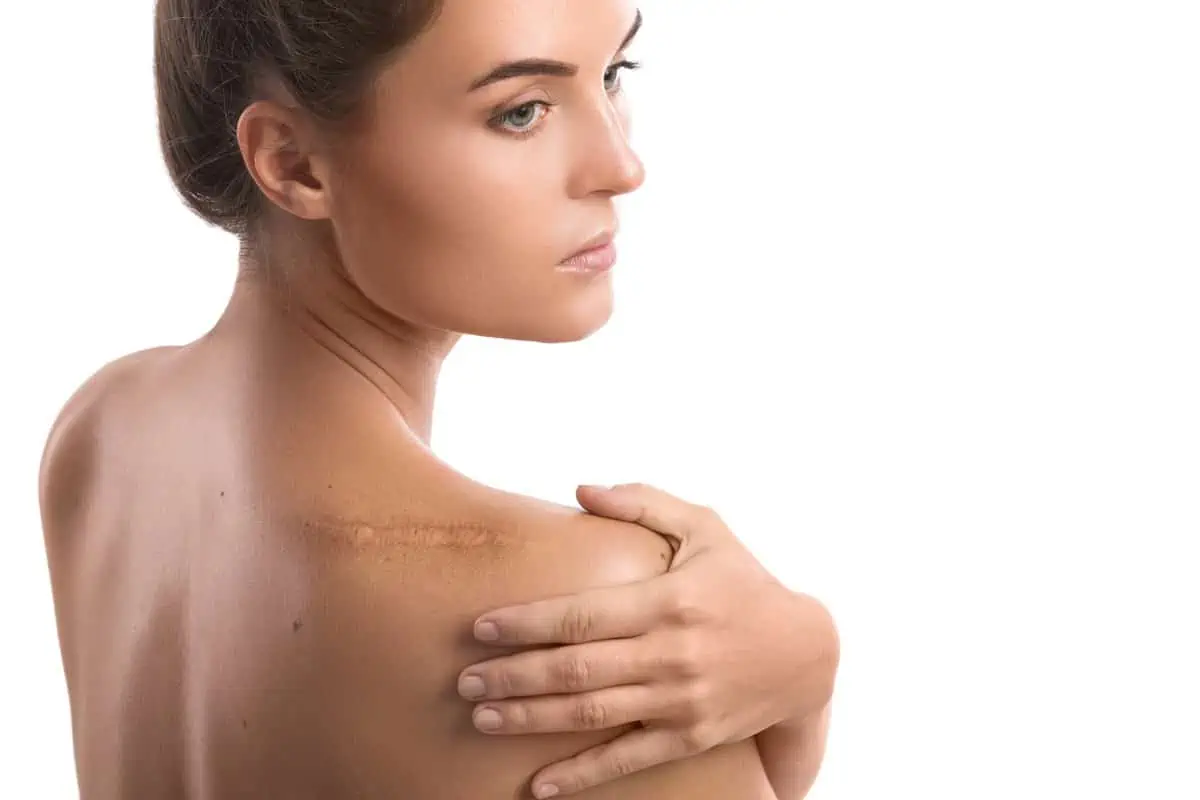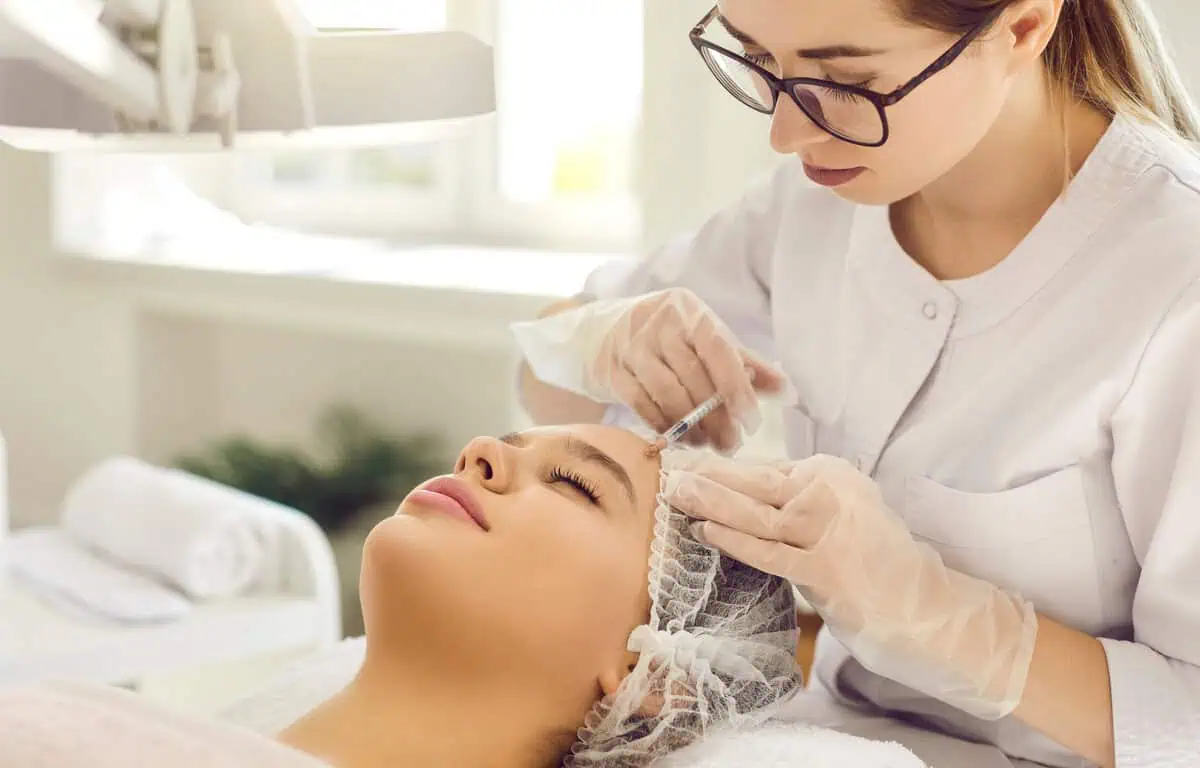Scar tissue is a natural part of the body’s healing process. Scars can be a source of concern and curiosity, whether it’s from a surgical procedure, an injury, or an acne breakout.
How long does scar tissue take to heal? This question often comes up, and the answer varies depending on several factors. In this article, we will explore the process of scar tissue repair and provide insights into what you can expect during the healing journey.
All About Scar Tissue Formation
Even if it’s a minor cut or a large surgical incision, your body reacts to any trauma or injury to your skin by starting the healing process.
Collagen, a structural protein, is created during this process to heal the injured area. Scarring results from the fact that the collagen fibers created during the healing process are frequently not the same as the normal skin tissue.
Factors Affecting Scar Healing
The duration it takes for scar tissue to heal can vary significantly from person to person. Several factors play a role in determining the healing timeline:
- Type of Wound: Your wound type plays a significant role in scar tissue repair. Surgical incisions tend to heal differently than wounds caused by accidents or burns.
- Location on the Body: The body’s ability to heal varies depending on the scar’s location. Scars on areas with good blood circulation (face) tend to heal faster than those with poor circulation (extremities).
- Skin Type: Your skin type also influences the healing process. People with different skin types may experience varying rates of scar healing. For instance, individuals with darker skin may be more prone to keloid or hypertrophic scars.
- Overall Health: Your general health and immune system also play a role in scar tissue repair. A balanced lifestyle and nutrition can promote faster healing.
Stages of Scar Tissue Repair
Scar tissue repair generally follows a predictable pattern that involves various stages:
- Days 1-6 of the Inflammatory Phase: During this first stage, the body’s immune system attempts to cleanse the wound and eliminate any damaged tissue. During this phase, swelling, redness, and discomfort are typical.
- Proliferative Phase (Weeks 1-6): During this stage, collagen production rises and new tissue forms. The wound gradually gets smaller as it begins to constrict and seal.
- Remodeling Phase (Months to Years): The last stage entails remodeling collagen fiber. The scar may eventually become less apparent over this months-long to years-long procedure.
Average Scar Healing Timelines
While the exact timeline for scar healing varies, here are some general guidelines based on common types of scars:
- Small Cuts and Minor Injuries: Superficial wounds like small cuts and scrapes typically heal within a few weeks to a few months. These scars often fade away over time.
- Burn Scars: The healing process for burn scars can be more extended, often taking years. These scars may require ongoing treatment and management.
- Keloid and Hypertrophic Scars: Keloid and hypertrophic scars (raised than regular scars) can take longer to heal. They may continue to grow for months and may require specialized treatments.
Ways to Promote Scar Tissue Repair
While the body naturally heals scars over time, there are steps you can take to promote scar tissue repair and minimize their appearance:
- Use Scar-Reducing Products: Over-the-counter or prescription creams and gels containing silicone or other scar-reducing ingredients can help improve the appearance of scars.
- Protect from Sun Exposure: Sun exposure can darken and make scars more noticeable. Use sunscreen or cover the scar when exposed to sunlight.
- Consider Professional Treatments: For more stubborn or severe scars, professional treatments such as laser therapy, microdermabrasion, or corticosteroid injections may be recommended.
The 1540 Fractional Laser Treatment
This method is the best for minimizing scarring. It has this fractional laser technology with its precision laser energy microbeams to produce controlled micro-injuries on the skin.
The body repairs these micro-injuries to replace the damaged tissue by generating new, healthy skin cells. The very effective 1540 Fractional Laser Treatment can heal scarring in several places, including the face, neck, chest, and even the delicate areas surrounding the eyes.
Say Goodbye To Scars
This treatment offers remarkable results for those seeking to diminish the appearance of scars caused by acne, surgery, or injury. While individual responses may vary. Most clients start to notice improvements in skin texture and tone.
It is within just a few weeks of their initial session!
Still, the best results often emerge over several months as collagen production increases, providing long-lasting benefits that can endure for years with proper skincare maintenance.
If you’re ready to reclaim smoother, rejuvenated skin, consider scheduling a consultation at Coral Springs Med Spa to explore the potential of our Scar Tissue Repair treatment.
Key Benefits of Scar Tissue Repair
Minimizes the Appearance of Scars and Wrinkles: Scar Tissue Repair is highly effective at reducing the visibility of scars and wrinkles, helping you achieve a more youthful appearance.
- Stimulates Collagen Production: The treatment stimulates the production of collagen, a crucial protein that enhances skin’s elasticity and firmness.
- Treats Multiple Areas of the Body: Whether you have scars on your face, neck, chest, or other areas, Scar Tissue Repair can effectively address them.
- Gradual, Progressive Results: Results may vary, but the gradual and progressive improvement in skin appearance ensures a natural and subtle transformation.
- Long-Lasting Effects with Proper Care: With proper skincare maintenance, the effects of Scar Tissue Repair can last for years, providing enduring benefits.
- Minimal Downtime and Side Effects: Unlike some invasive procedures requiring lengthy recovery periods, Scar Tissue Repair involves minimal downtime and side effects.
Taking Your Scar Treatment To Better Days?
So, how long does scar tissue take to heal? It varies widely depending on the type of scar, its location, and individual factors. While most scars will continue to improve over time, some may require extra attention and care.
Suppose you have concerns about a scar or seek ways to enhance healing. In that case, consulting with a medical professional or dermatologist is advisable.
Don’t let scars and wrinkles hold you back from feeling confident in your skin. Experience the transformative effects of Scar Tissue Repair at Coral Springs Med Spa, where our skilled professionals are ready to help you achieve smoother, rejuvenated skin.
Book an appointment with us today and discover the remarkable potential of Scar Tissue Repair. Feel free to check out our other services, like CoolPeel and Morpheus8!






